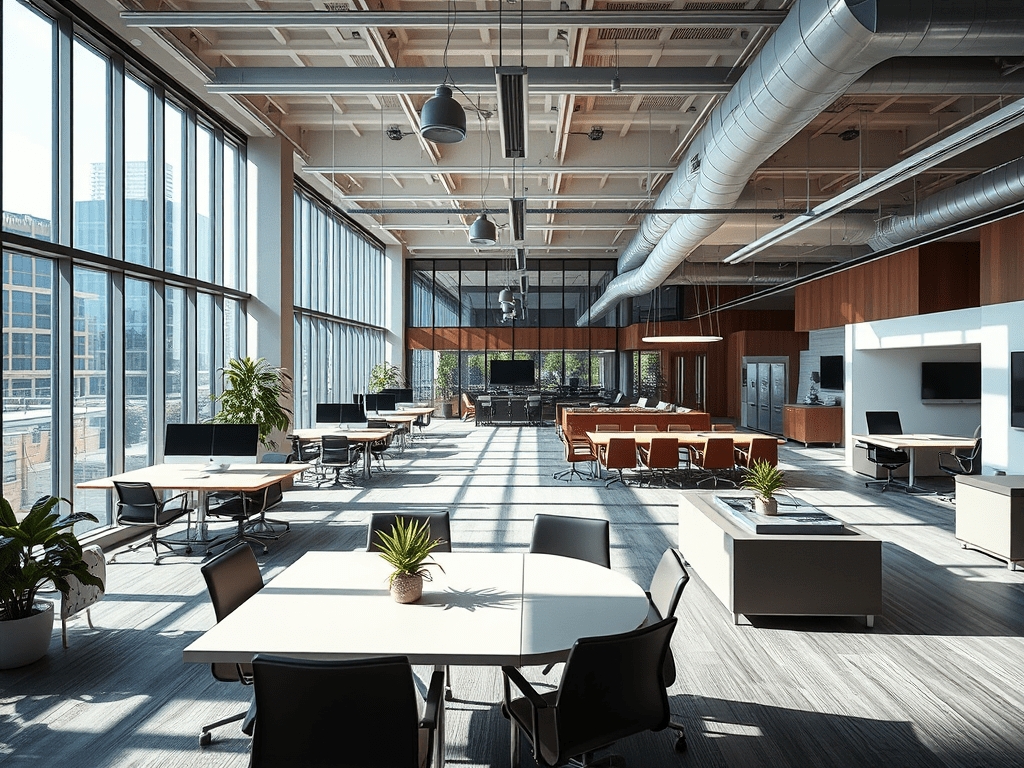Virtual Staging for Office Spaces: Maximizing Appeal to Potential Tenants

In the competitive world of commercial real estate, first impressions are crucial. As the way we work continues to evolve, so too must our approaches to showcasing office spaces. Enter virtual staging – a cutting-edge technology that’s revolutionizing how property managers and real estate professionals present vacant office spaces to potential tenants. This article explores how virtual staging can effectively showcase office spaces, helping businesses attract the right tenants in today’s dynamic market.
The Power of Virtual Staging
Virtual staging is the process of creating realistic, computer-generated imagery to showcase the potential of an empty space. For office environments, this means transforming bare rooms into vibrant, functional workplaces that speak to the modern professional’s needs and aspirations.
Benefits of Virtual Staging for Office Spaces
- Cost-Effective: Compared to traditional staging, virtual staging eliminates the need for physical furniture, decor, and labor, significantly reducing costs.
- Flexibility: Multiple design scenarios can be created for the same space, catering to different business types or work styles.
- Time-Efficient: Virtual staging can be completed in a fraction of the time required for physical staging, allowing for quicker market listings.
- Scalability: From small startups to large corporations, virtual staging can easily adapt to showcase spaces of any size.
- Pandemic-Friendly: In an era of social distancing, virtual staging offers a safe alternative to in-person viewings.
Showcasing Office Spaces Effectively
1. Highlight Versatility
Virtual staging allows property managers to demonstrate the versatility of a space. For instance, an open floor plan could be staged as:
- A collaborative workspace with breakout areas
- A traditional office layout with individual workstations
- A hybrid model combining open and private spaces
This versatility helps potential tenants envision how the space could work for their specific needs.
2. Emphasize Modern Amenities
Today’s workforce values amenities that promote well-being and productivity. Virtual staging can showcase:
- State-of-the-art conference rooms
- Wellness areas or meditation spaces
- Ergonomic furniture and standing desks
- High-tech collaborative tools like smart boards
By highlighting these features, property managers can appeal to forward-thinking companies prioritizing employee satisfaction.
3. Showcase Branding Opportunities
Virtual staging can demonstrate how a space might look with a company’s branding. This could include:
- Custom wall graphics or signage
- Branded color schemes
- Reception areas with logo placement
This personalized touch helps potential tenants imagine the space as their own.
4. Demonstrate Natural Light and Views
Good lighting and attractive views are highly prized in office spaces. Virtual staging can:
- Optimize furniture placement to maximize natural light
- Showcase window views without obstruction
- Illustrate how different times of day affect the space
Best Practices for Virtual Staging
- Maintain Realism: While it’s tempting to create an idealized version of the space, it’s crucial to maintain realism. Overly embellished virtual stagings can lead to disappointment during in-person viewings.
- Provide Context: Include floor plans alongside virtually staged images to give potential tenants a clear understanding of the space’s layout and dimensions.
- Offer Multiple Perspectives: Provide a variety of angles and layouts to give a comprehensive view of the space’s potential.
- Keep It Current: Ensure that virtual stagings reflect current office trends and technologies to appeal to modern businesses.
- Disclose Virtual Staging: Always clearly indicate that images are virtually staged to maintain transparency and trust with potential tenants.
The Future of Office Space Presentation
As technology continues to advance, we can expect virtual staging to become even more sophisticated. Innovations like virtual reality (VR) and augmented reality (AR) are already being integrated into the virtual staging process, allowing potential tenants to “walk through” staged spaces from anywhere in the world.
Furthermore, AI-powered virtual staging tools are emerging, capable of generating multiple design options based on the latest trends and specific client preferences. These advancements promise to make the process of showcasing office spaces even more efficient and tailored to individual needs.
Conclusion
Virtual staging is more than just a trend; it’s a powerful tool that’s reshaping how we present and perceive office spaces. By effectively showcasing versatility, modern amenities, branding opportunities, and addressing contemporary concerns, virtual staging helps property managers and real estate professionals attract the right tenants in a competitive market.
As we move forward in an increasingly digital world, the ability to virtually transform empty spaces into vibrant, personalized work environments will become not just an advantage, but a necessity in the commercial real estate industry. Embracing this technology now positions forward-thinking professionals at the forefront of the industry, ready to meet the evolving needs of modern businesses.